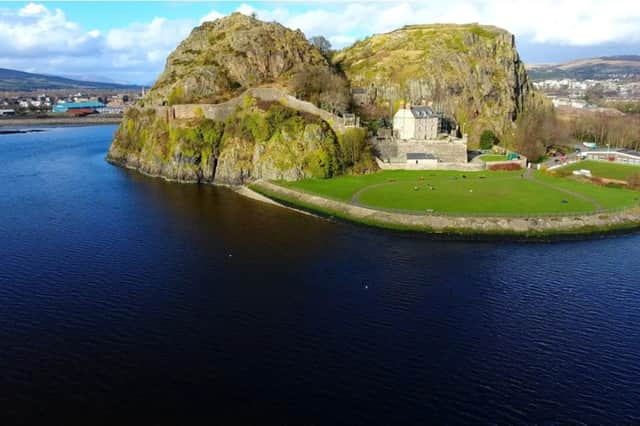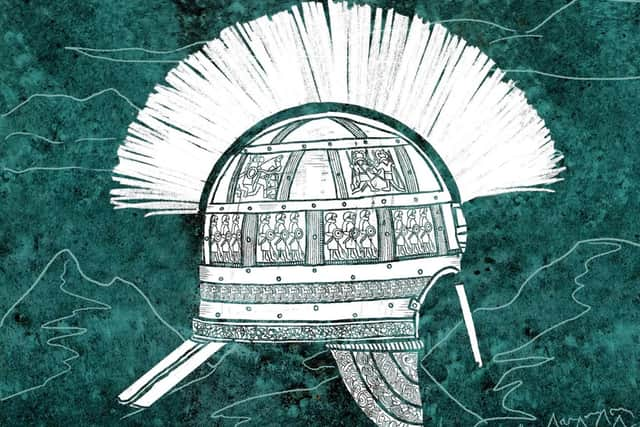Scotland's lost realms have left fascinating traces in the mists of time – Thomas Williams


Cue sinister sniggering from the assembled throng of Anglo-Norman barons. He probably never said anything of the sort, although given his general attitude towards Scotland over the long years of his reign, it seems likely that the sentiment frequently hovered at the forefront of his belligerent mind.
If so, he might have preferred northern Britain as it was a few centuries before his time, back when there weren’t many Scots in Scotland at all.
Advertisement
Hide AdAdvertisement
Hide AdWriting in the first century AD, the Roman writer Tacitus described the land that lay beyond the Forth-Clyde isthmus as “Caledonia”.
In the following century, however, the Greek geographer Ptolemy identified the Caledonians as one of many tribes beyond Rome’s northernmost frontier. The others he identified as Cornovii, Caereni, Smertae, Lugi, Vacomagi, Taexali, Epidii, Venicones, Decantae, Carnonacae and Creones.
There is not much to be said about this potpourri of peoples. A clue, however, in a Latin text of 310, refers to the “forests and marshes of the Caledonians and other Picts”, implying that some, if not all, were regarded as Pictish.
Pictishness, what it was, who it applied to, how it can be identified in the archaeological record, remains a slippery concept. Robert E Howard, creator of Conan the Barbarian, writing in the 1920s, saw Picts as “brutish savages, living in mud huts” a view he derived from “a brief remark by an English historian”.
Scholarship has come a long way since then. It is now firmly appreciated that the Pictish realms of northern Britain were politically sophisticated, militarily powerful and possessed of an advanced and unique artistic culture, famously manifested in carved stones and the enigmatic symbols that adorn them.


The Picts’ origins and their political organisation are, however, obscure.
The Pictish king-list, which originated in the seventh century, but was created in its surviving form in the tenth, opens with a section that describes how “Cruithne the son of Cinge, father of the Picts living in this island, ruled for a hundred years. He had seven sons. These are their names: Fib, Fidach, Floclaid/Foltlaid, Fortrenn, Got/Cat, Ce, Circinn.” Each son supposedly reigned as a king in his own right. This, of course, is hogwash, the giveaway being that "Cruithne” is simply the Gaelic word for “Pict”.
Nevertheless, although clearly a fable, the introduction to the king-list does seem to preserve, in the names of Cruithne’s seven sons, the names of a number of tribes or petty Pictish kingdoms which in some cases survived into the historical period.
Advertisement
Hide AdAdvertisement
Hide AdChief amongst them is Fortrenn, whose name is derived from the undoubtedly historical Kingdom of Fortriu.
In the late fourth century, the Roman historian Ammianus Marcellinus made reference to the “Verturiones” people who rampaged into Roman Britain in 367/8. Verturiones is the origin of the term Fortriu.
Stunning archaeological discoveries at Burghead, Rhynie, Bennachie and Portmahomack situate Fortriu, and subordinate sister kingdom Cé, in a region originally centred around the River Findhorn and the land to the south and east of the Moray Firth.
The power of Fortriu over the rest of Pictdom would grow over time, until its kings counted themselves overlords of Orkney as well as most of central and eastern Scotland. Its dominance would only wane in the upheavals of the Viking Age before disappearing entirely in the tenth century, subsumed within a united kingdom of Alba.
Picts, however, were not the only peoples inhabiting the northern reaches of Britannia. A number of ‘British’ kingdoms, where people spoke ‘Brittonic’ Celtic similar to archaic Welsh and Cornish, straddled the lowland parts of Scotland and the northern limits of modern England.
The best known of these are Rheged, Alt Clut and Gododdin, though there were undoubtedly others. Alt Clut controlled the region bordering the Clyde from a fortress at Dumbarton Rock.
The realm endured until 871 when the citadel was sacked by Vikings before re-emerging as the Norse-inflected kingdom of Strathclyde, an entity, with its centre of power at Govan, that lasted for another 200 years or so.
Rheged, to the south, was a shadowy realm that might never have existed outside the imaginations of medieval Welsh poets and genealogists. If it did, however, the evidence would place it in Cumbria, Dumfries and Galloway, a sub-Roman realm bisected by Hadrian’s Wall that reached its apogee around 600 in the reign of the mighty King Urien. In Scotland, its major centres seem to have been at Whithorn, Kirkmadrine and Mote of Mark.
Advertisement
Hide AdAdvertisement
Hide AdThe kingdom of Gododdin stretched from the Forth into what is now northern England. From its capital at Dun Eidyn (Edinburgh), the people of Gododdin mounted a passionate, though doomed, resistance against the encroaching English-speaking people of Northumbria in the sixth century who ultimately absorbed those territories into their realm.
The exploits of the Gododdin, and the names of dozens of warriors who died in a welter of blood-letting at the unknown battlefield of Catraeth, were immortalised in the early Welsh poem Y Gododdin, Britain’s oldest paean to heroic defeat.
So what about the Scots? The west-coast kingdom of Dál Riata had its origins amongst the Scotti, Gaelic-speaking Irish, and at one time included parts of Ulster. The seat of Dál Riata’s power was at Dunadd, the hill-top fortress that rises above Moine Mhor, the 'great moss', an otherworldly sea of marshland in Kilmartin Glen.
A rock-cut footprint within the fortress precinct may have served a function in the ritual inauguration of kings. By sponsoring Christianity, particularly through the influential monastery of Iona, Dál Riatan kings and churchmen enabled ‘Scottish’ Gaelic influence to spread more widely than the kingdom’s political clout alone might otherwise have allowed.
When, under pressure from Viking harassment, what was left of Dál Riata and Fortriu merged to become a single realm, it was the culture and language of the former that came ultimately to dominate.
It was Domnall II in 900 who became the first to be referred to as ri Alban, King of Alba. To the tenth-century English, however, his successors were known as Kings of Scots and the realm they ruled over as Scotland.
To outsiders, northern Britain had become, for the first time, truly “full of Scots”. In the process, it also became a land of lost realms, its peoples and cultures – British, Pictish, Norse, even English – erased, forgotten or pushed to the margins as a new Scottish identity took hold.
Lost Realms by Thomas Williams is published tomorrow by William Collins
Comments
Want to join the conversation? Please or to comment on this article.
